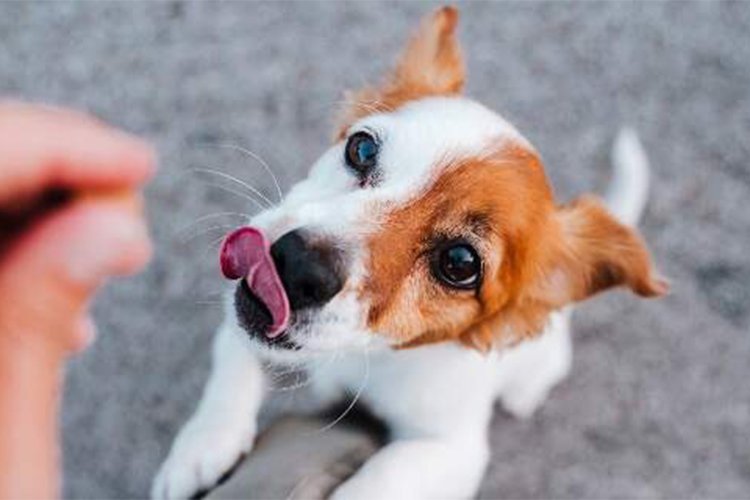Most people know that dogs love to chew. Chewing is a natural behavior of all dogs. It allows them to explore the world around them, exercise their jaws, and even clean their teeth. Most importantly, it keeps them mentally occupied and relieves boredom.
However, when dogs lack the right chews, it can lead to destructive chewing and other behavioral problems. One way to allow your dog to satisfy his natural desire to gnaw on things is to provide him with plenty of chew toys. Another way to satisfy your dog’s need to chew while also providing him with a tasty reward is to give him tasty, edible chews.
With so many types of chews on the market, it can be difficult to decide which are the safest and healthiest chews for your dog. While no dog chew is without risk, some are healthier than others.
Dog Chews to Avoid
Although no chew is 100 percent safe for dogs, some are particularly dangerous.
Indigestible chews like chews made of hard plastic or nylon: Generally speaking, indigestible chews have a high chance of causing at least a gastrointestinal blockage or digestive upset. Chews made of hard plastic or nylon are often too hard and can damage teeth. They also develop rough edges when chewed, which can cause injury. These toys are indigestible and cause gastrointestinal blockages or damage when eaten.

Chews that are too hard: If you think the chew is too hard for your dog to bite off a piece and swallow, then it is probably too hard for your dog to chew. Very hard chews can cause tooth fractures or injuries to the mouth area. As a rule of thumb, any chew that would hurt if you slammed it on your knee is too hard for your dog.
Animal hooves, antlers, and bones: Hard animal parts, and especially cooked bones, pose the greatest risk to your dog’s teeth and gastrointestinal tract because they are very hard and indigestible. If your dog doesn’t break a tooth first, he may break off a piece and swallow it. Some animal horns (like buffalo or goat horns) soften and fray a little when chewed. These may be less dangerous to teeth and are better tolerated by the gastrointestinal tract, but they should be used with extreme caution.
Rawhide: This is a somewhat controversial chew toy. Although many dogs tolerate rawhide well, it’s important to know that large pieces of rawhide are not easily digested and can cause gastrointestinal blockage or irritation. Additionally, rawhide is often treated with potentially harmful chemicals. However, there are some exceptions. Some types of rawhide are specifically formulated by veterinarians with safety and digestibility in mind. Ask your veterinarian for more information on safe rawhide chews that can help keep teeth clean.
Lorem ipsum dolor sit amet, consectetur adipiscing elit. Ut elit tellus, luctus nec ullamcorper mattis, pulvinar dapibus leo.
Lorem ipsum dolor sit amet, consectetur adipiscing elit. Ut elit tellus, luctus nec ullamcorper mattis, pulvinar dapibus leo.
Digestible Chew Toys for Dogs
There are many chew toys on the market today that are considered safer for dogs because they are digestible and not too hard on the teeth. It is important to remember that even large pieces of digestible chews can cause gastrointestinal distress or constipation. Always supervise your dog after giving him chews. If the dog appears to be swallowing large pieces, take the chew away. Additionally, if the dog develops vomiting, diarrhea, or other signs of illness, see your veterinarian immediately.
The advantage of digestible chews is, of course, their increased safety. However, the disadvantage is that they do not last very long and tend to be more expensive than bones and hooves. To save money, try to trade off between chew toys and edible chews. Aggressive chewers may do well with something like a food-filled Kong Ultra, bully sticks, beef trachea, or flavored dental chews.

Bully sticks: These are some of the most popular dog chews today. Made from beef trachea (yes, that means penis), they are dense, flavorful, and come in a variety of sizes. Bully sticks are some of the safest chews that last the longest, and dogs love the taste and texture. For aggressive chewers, braided bully sticks tend to last longer. The downside to bully sticks is that they can be a bit expensive and smell pretty bad. Additionally, some experts worry about their safety from bacterial contamination. Get bully sticks from reputable sources. And veTry low-odor bully sticks to save your nose.
Beef trachea: Beef trachea, also called “windies” or “moo tubes,” is made mostly of cartilage and contains glucosamine and chondroitin, which are beneficial to joints. Beef trachea last almost as long as bully sticks, but it really depends on the dog. They can also be more expensive than bully sticks, although they don’t smell quite as bad.
Other animal parts: These can be good or bad depending on the source. If in doubt, ask your vet about the safety of a chew. Generally speaking, the aorta, tendons, esophagus, and tripe are among the safer animal chews. Ears are more controversial, as they are more like rawhide in terms of digestibility (plus, pig ears tend to be high in fat). Some animal horns soften when chewed and fray into small, digestible pieces, but these should be used with caution.
FlaVored’s dental chews: Greenies or N-Bones are made from digestible ingredients such as wheat gluten, corn starch and meat or poultry meal. While these ingredients are perfectly edible, they are not ideal for dogs on a strict grain-free diet due to allergies or owner preferences. These chews also go very quickly, especially with aggressive chewers.
Which chews are best for your dog?
Remember that there is no one chew that is right for every dog. For overweight dogs or those with sensitive stomachs, it may be best to stick with non-edible chew toys. For healthy but picky dogs, you may need to try a few different types of chews before you find what works best for your dog. Overall healthy and non-picky dogs will probably like a little bit of everything. Just make sure that no one treat or chew makes up more than about 10 percent of your dog’s diet.

